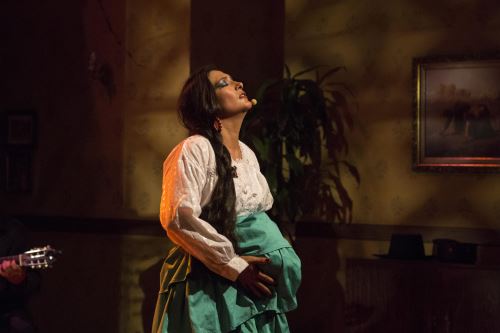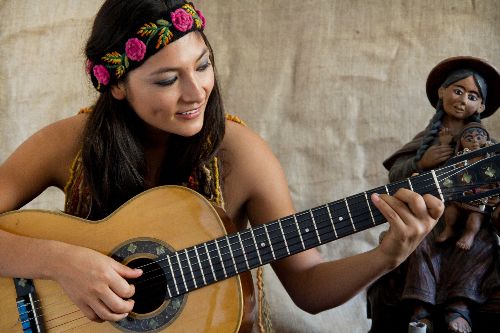Peruvian actress and singer Magaly Solier on Monday officially became a UNESCO Artist for Peace in acknowledgement of her ongoing work to promote Peruvian culture, traditions and native languages, as well as her efforts to defend women's rights.
"Speaking in our tongue, our Quechua, is no reason to be ashamed of," the artist said during her designation ceremony at UNESCO headquarters in Paris.
"At the beginning of my career, I felt discriminated when I spoke in Quechua, but now —from here— I tell all Peruvians not to be ashamed," she added.
Solier also underlined the role of education as "the perfect weapon to eradicate any kind of problem."

Born in a Quechua family in the Huanta Province (Ayacucho region), Peru, Magaly Solier Romero worked in the fields with her parents and brothers. She started her singing career when she won a prize at the Ayacuchana Song Festival in 2003.
A year later, she had her first acting role in the Peruvian movie,
Madeinusa, directed by Claudia Llosa. Thanks to this first full-length feature film, she was doubly awarded "Best actress" in 2006: at the Cartagena de Indias Film Festival in Colombia and at the Montreal Ibero-Latin American festival in Canada.

In 2009, she played Fausta in Claudia Llosa's Academy Award nominated movie
The Milk of Sorrow, which brought her worldwide recognition. She then received roles in
Altiplano, directed by Peter Brosens and Jessica Woodworth, and in
Amador, directed by Fernando Leon de Aranoa.
This movie was entered in the Guadalajara International Film Festival in Mexico, where Ms. Solier received the "Best Actress" award.
That same year she released her first album – Warmy. Most of the songs are sung in Quechua and it was awarded "Best Music Album" in Peru.
In 2014, she released her second album, Coca Quintucha, which includes Andean traditional songs performed in Quechua.
Following the album's release, she performed several concerts in indigenous languages such as Quechua, Aymara, Ashaninka and Muchik.

Solier's artistic career thus reflects her commitment to peace, human rights, social justice, environmental protection, and rights for children to study in their mother tongue, ideals she will continue to defend in her new UNESCO role.
"One of her missions as a UNESCO Artist for Peace will be the promotion of the Year of Indigenous Languages in 2019, as well as the promotion of the UNESCO Atlas of languages, which is being prepared," the release continues.
UNESCO Artists for Peace are internationally-renowned personalities who use their influence, charisma and prestige to help promote UNESCO's message and programs.
UNESCO works with these distinguished personalities in order to heighten public awareness regarding key development issues and to inform the public what the Organization's action is in these fields.
(END) AFP/JAM/DHT/MVB